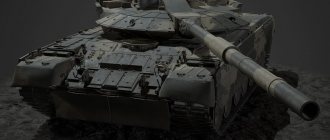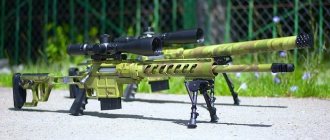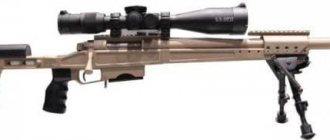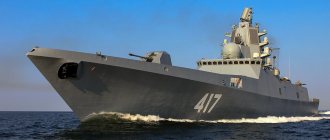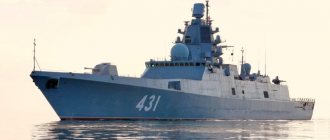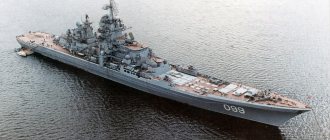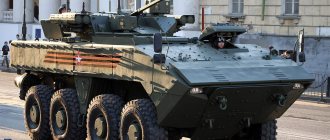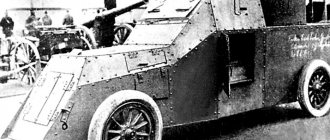Transporter theory
The history of infantry fighting vehicles and armored personnel carriers (as, indeed, most modern weapons) begins on the battlefields of the First World War.
After the bloody offensive operations of 1916–1918, two main problems emerged. On the same topic
How tanks became a formidable weapon, or the most incredible battles of the First World War
First, a tank can help break through defenses, but cannot hold territory. Tanks need infantry support, and “right now,” and not when the “queen of the fields” crawls out of the mud and, puffing and swearing, catches up with the vehicles.
Secondly, if the front has already been broken through, then the attacking units must maintain a high tempo so that the defenders do not have time to bring up reserves and plug the hole in the defense. People and animals have limitless powers; off-road vehicles were not suitable.
The solution to the first problem almost immediately took the form of modern infantry fighting vehicles - something well-armed, powerfully armored, capable of fighting in the same battle formations as tanks. Considering their tank origins, they are also heavy infantry fighting vehicles (by modern standards). Their task was to get close to enemy positions, suppress resistance with their weapons, and then land infantrymen directly on the head of the stunned enemy.
British Mk V tanks took up to 14-15 people with light machine guns. At the end of the war, a specialized transporter based on the Rhombus Mk IX with 30 transportable “passengers” appeared; “Sturmpanzerwagens” could transport not only cargo, but also infantrymen. At the same time, tankers were trained to fight as assault infantry, so the number of potential “motorized riflemen” was 18-24 people. Even the modest Schneider CA-1 carried up to four gunners.
One can immediately recall the Russian “Hannibal’s Elephants” - the Jeffery-Poplavko armored cars, whose function was to transport an infantry assault detachment.
The first specialized armored personnel carrier based on the Mark IX tank
The second problem required a more comprehensive approach that would include mechanization of infantry, artillery and supply forces. By 1918, the terrible specter of the costs of mass mechanization hung over financiers, but, fortunately for them, the war was over.
However, the conclusion of peace did not in any way affect military theorists, among whom a heated international discussion unfolded regarding the prospects for a future conflict and the role of armored forces in it. Everything was going to the point that we would have to return to the questions posed by the Great War.
BMP "Type 73"
When in the 1950s The Japanese Self-Defense Forces were created, their first armored personnel carriers were half-track vehicles supplied from the United States. The first vehicle created in Japan and put into service was the Type SU 60 armored personnel carrier, produced by Mitsubishi Heavy Industries and Komatsu Manufacturing Corporation until the early 1970s. The Type SU 60 is not amphibious, has a crew of 4 people, and is capable of carrying 6 fully armed soldiers. There are more than 400 vehicles and their modifications in service, including a reconnaissance vehicle for RBH factors, ...
Read more
Doctrinal dilemmas
By the second half of the 20s, theoretical research was supported by the development of technology. Armored vehicles have improved, become faster and more reliable, which created the preconditions for the introduction of independent mechanized formations and concepts for their use.
On the same topic
Broneoskar 2018: the coolest tank events of the year
However, the old problem has not disappeared anywhere - without exception, all countries that entered the “tank race” were faced with the most important doctrinal question: how to equalize the speed of fast mechanized formations and slow branches of troops, such as artillery or infantry?
This question was important for two reasons. Firstly, there was no point in rapidly advancing with tanks “to the entire depth of the enemy’s battle formation” if everyone else could not keep up with them. Secondly, the main trump cards of armored formations are their autonomy and high mobility. All elements must move at the same high speed. Deliberately restricting mobility—for example, “tying” the speed of tanks to the speed of infantry—deprives the formation of its raison d'être.
The obvious answer was “Fullerian” universal mechanization. The problem was that it required completely indecent expenses. Even the Soviet Union, with all its vast capabilities in resource concentration and mobilization economy, could not afford this.
Tank battalions of the 1st Tank Brigade under the command of Percy Hobart advance in dense battle formations during maneuvers in 1934
A less radical option was partial mechanization and motorization. The shock formations were saturated with equipment as much as possible, and the rest... well, as far as the budget would allow.
Evgeny Bashin-Razumovsky Expert on historical issues
A striking example here is the German panzerdivision, stuffed with trucks, tractors and armored personnel carriers. At the same time, the horse remained the main thrust for the Wehrmacht infantry divisions. And if the Reich army had the notorious “million drivers”, then there were at least a million horses. General motorization happened only in the industrial United States, and even then not immediately.
Domestic military thought leaned toward the first option. In the early 30s, Soviet mechanized forces were experiencing rapid growth and had in service or in development all possible types of combat and auxiliary equipment, including armored personnel carriers. The army returned to some of the developments only in the 60s, and some are still not in service.
Experienced ambulance transport and landing BA-22 based on the GAZ-AAA truck
Unfortunately, since 1936, the Red Army entered a period of almost continuous changes and gradual degradation in the theory and practice of using armored vehicles, which lasted until 1941. It is from this period that the legs of most of the strange decisions and myths associated with armored personnel carriers and infantry fighting vehicles grow.
Let's move on to them.
BMP AIFV
The shortcomings of the MPZ armored personnel carrier were recognized by the US Army in the late 1960s, and in 1967 FMC received a contract to manufacture two prototypes of the new vehicle, called the XM765. It was basically an M113 with a completely enclosed weapons mount and a troop compartment in the rear, equipped with firing loopholes and observation devices in the upper part of the hull with the sides sloping inward. The US Army did not accept this vehicle, but proposed to continue the development of a much heavier and more complex vehicle, which was subsequently adopted into service...
Read more
Myth 1: An armored personnel carrier is an infantry cart
No, an armored personnel carrier is primarily a multifunctional platform. We can turn to the experience of Germany, France, the USA, Great Britain and we will find there examples of dozens of vehicles based on armored personnel carriers, and later on infantry fighting vehicles.
Time and practice have shown the correctness of this path. For example, the British multi-purpose transporter "Universal Carrier", whose roots stretched to the Carden-Loyd Mk.VI wedge, ended its journey in the mid-1960s with a series of 113 thousand units and with dozens of different options - from weapons carriers to command, medical and engineering cars
"Universal Carrier" in service in the Red Army
These days, any of the modern light or medium platforms, if not, then at least tend to follow the same principles. A universal armored chassis and dozens of functional options based on it.
Robotic platforms are developing in the same direction. Like their predecessors in the 1930s, they provide evacuation of the wounded and maneuver of heavy weapons on the battlefield. Considering the value of the modern soldier, is it necessary to talk about the choice of the military?
As for firepower, it is constantly growing: from rifle-caliber machine guns it has already reached 30-50 mm cannons (and this is not the limit!). The same goes for armor. Armored personnel carriers are rapidly catching up with infantry fighting vehicles in terms of their capabilities, and the difference between them in this aspect is thinning to the point of invisibility.
Armament of the BTR-80
The fighting compartment of the armored personnel carrier is located in the middle of the hull and turret. The armament of the BTR-80 consists of two coaxial machine guns:
- KPVT machine gun (Vladimirov heavy machine gun), 14.5 mm caliber. This machine gun is one of the most powerful machine guns ever used in the armies of the world. It combines the armor-piercing power of an anti-tank rifle and the rate of fire of a conventional machine gun. Capable of penetrating lightly armored targets;
- 7.62-mm PKT machine gun (Kalashnikov tank machine gun), which is coaxial with the main machine gun.
In addition to machine guns, the turret contains:
- Day sight;
- Viewing devices;
- Manual guidance devices.
The gunner himself sits on a special hanging seat, which is located under the turret. The gunner can accurately fire a heavy machine gun at a distance of about 2,000 meters. With a Kalashnikov machine gun, the sighting range is half that and is 1,000 meters. Also, a large-caliber machine gun is capable of firing at low-flying, low-speed targets, such as helicopters. The rate of fire of the Vladimirov heavy machine gun reaches 600 rounds per minute, and the Kalashnikov machine gun fires at a speed of up to 800 rounds per minute. Ammunition in belts is placed in cartridge boxes and amounts to 500 rounds of ammunition for the KPVT and 2,000 rounds of ammunition for the PKT.
Troops placed in an armored personnel carrier can fire without leaving it, since the BTR-80 is equipped with embrasures. In total, the hull has 7 embrasures, 2 of which allow machine gun fire. Hatches located on the roof are adapted for throwing grenades, firing hand-held missile systems and grenade launchers. There are special devices for launching smoke grenades, which allow you to create a dense smoke screen.
The body of the BTR-80 easily withstands 7.62 mm bullets and shell fragments. Frontal armor, traditionally stronger, can withstand bullets from a heavy machine gun.
The air ventilation system provides the crew and troops of the BTR-80 with reliable protection from toxic and radioactive substances. Thanks to 4 hatches and two double doors, the landing force is capable of landing and disembarking in a matter of seconds. When the lower door leaf is opened, a convenient step is created, allowing entry and exit while moving.
TTX BTR-80 has the following characteristics:
- The combat weight of the armored personnel carrier is 13,600 kilograms;
- The crew is 10 people;
- The maximum speed of the BTR-80 on land is 80 kilometers;
- The maximum speed on water is limited to 9 kilometers;
- On full tanks, the armored personnel carrier is capable of driving 600 kilometers or swimming 12.
The BTR-80 is capable of solving any combat mission both in the far north and in the desert sands.
Myth 2: In the USSR they knew what they were doing!
In fact, no one knew this between the world wars; all countries were groping for the right path to building armored forces, each collecting their own rake. However, the Soviet Union “distinguished itself” in this case - not in the best sense.
At first things went very well. By the early 1930s, the country had a unified doctrine of armored forces and, more importantly, a common view regarding their use. How important is it? Only two countries, Germany and the USSR, have developed full-fledged doctrines, and the consensus of the army top regarding the use of armored vehicles is a completely unique Russian achievement. While others were still arguing, the Red Army was already building in full swing.
Great maneuvers near Kiev, 1935
Around 1934, the country's leadership began to show dissatisfaction with the speed of introducing deep combat and put pressure on the army. The army team responded with quick, but not entirely well-thought-out proposals. Thus, the head of the Automotive and Tank Directorate of the Red Army, Innokenty Andreevich Khalepsky, in a very original way, tried to increase the mobility and controllability of mechanized corps by removing all unnecessary things or, as he put it, “suspensions.”
The list of innovations, for example, included a proposal to remove all transporters and transport supplies directly on tanks. Other equipment was also distributed, including heavy tankettes and infantry transporters.
In subsequent years - and especially after Tukhachevsky and his associates were accused of a military-fascist conspiracy - the degradation only gained momentum. In just six years, Soviet tank theory regressed almost to the state of 1918–1920. The situation with armored vehicles was no better. Since 1938, tank formations have become almost homogeneous and consisting only of tanks.
Without auxiliary forces, without an interconnected structure that includes different branches of the military, with a pitiful company of motorized rifles at the brigade level - what kind of armored personnel carriers are there?
After the war, it was realized that, despite all its shortcomings, the doctrine of “deep combat” was quite logical and did not contain any incorrigible issues. Plus, time has convincingly proven that supporters of the ideas of mechanization were not empty dreamers: tens of thousands of tanks were eventually built, infantry were mounted on armored personnel carriers, and mass mechanization took place.
Grandfathers Fuller and Tukhachevsky nod approvingly from their tank paradise.
BTR FV 432
After World War II, many prototypes of tracked armored personnel carriers appeared in England, but it was not until 1962 that one of them, the FV 432, was selected by the British Army. It belongs to the FV 430 series of vehicles, which also includes the 105 mm FV 433 Abbott self-propelled artillery mount, produced at Newcastle between 1964 and 1967. Production of the FV 432 and many of its variants took place in 1963-1971, with a total of about 3,000 vehicles produced. Although the car was offered for export, it was not...
Read more
Myth 3: Why do all this if you have a tank?
Firstly, a tank is by definition more expensive than an armored personnel carrier. Secondly, given the army’s needs for mechanization, tanks cannot handle all the tasks. And finally, thirdly, by “pulling” tanks for secondary tasks, you simply wear them out even before contact with the enemy. The depravity of this approach was clearly demonstrated by the tragic summer of 1941.
Given the weak means of repair and evacuation (which was a huge problem for the Red Army), this meant from 10 to 30 percent of the tanks stood on the sidelines and did not take part in the battle.
They used tanks as transporters and lost a third before the start of the battle; How do you like this exchange?
Example? Please. The 2nd Tank Army, like all the others, was faced with an unexpectedly early spring and severe mud in February 1944. Everything that was not a tank was stuck in impassable mud, including the necessary ammunition and fuel and lubricants. What are we doing? That's right, we're sending tanks to the rescue.
As a result, the “thirty-fours” worked for everyone. They were ridden by machine gunners, they transported stocks of ammunition and fuel and lubricants in barrels, while also towing loaded vehicles. But even the T-34 has its strength limits. Reports from the repair units emphasized that the tanks failed not because of their quality, but “solely because of the heavy overload on the tank” (that’s how you should damage a tank!).
In the absence of armored personnel carriers, various “know-how” were used, such as drag sleighs
But that's not all. A large number of damaged tanks overloaded the already small number and equipment of repairmen. As a result, broken cars were disassembled into spare parts for “less broken ones” and written off as irretrievable losses.
The result in numbers - by February 24, 1944, out of 413 tanks and 78 self-propelled guns, 64 combat vehicles were lost for technical reasons. Almost ten percent - without any "Panzerwaffe". And this is without considering such consequences as a decrease in pace or losses in people due to the fact that a tank was needed somewhere, and at that time it was working as a transporter.
Evgeny Bashin-Razumovsky Expert on historical issues
A little about mechanized connection. Its strength lies in the mobility of all elements. In addition to tanks, these are reconnaissance, motorized infantry, artillery, engineers, communications and control. Setting up tanks, but leaving them without the supply of shells, fuel, artillery or infantry support, in most cases means a senseless loss of a mechanized formation.
The basis of the successful offensive operations of the Red Army in 1943–1945 were precisely mobile formations, and the basis of their mobility was trucks - including Lend-Lease - specialized equipment and armored personnel carriers. Without them, everything would have worked out much like it did at the beginning of the war.
History of creation
After the end of the Great Patriotic War, mutual grievances and political differences between the Soviet Union and the United States ultimately led to the outbreak of the Cold War. This period of confrontation between the two states was remembered, first of all, for the arms race, the aspirations of each of the warring parties to have at their disposal a formidable army with the best examples in its arsenal.
At the end of 1955, the Soviet command decided that infantry units needed an armored all-terrain vehicle. As conceived by senior commanders, such a vehicle should not only become a worthy replacement for the BTR-152, but also increase the mobility of Soviet infantrymen. By the standards of the arms race, the BTR-152 is already quite outdated. And some wooded and swampy areas of the terrain became an insurmountable obstacle for an armored personnel carrier.
At the beginning of 1956, the head of the Gorky Automobile Plant N.V. Sazanov decided to create a team to design a new armored personnel carrier, which, in addition to high cross-country ability, had to be able to overcome water obstacles.
Work in the factory workshops began to boil in the same year; design engineer V. A. Dedkov was appointed project manager. The design team placed the main emphasis on high cross-country ability. The factory workers worked without knowing fatigue, and already in 1958 the first floating prototype of the GAZ-49 was ready. It was equipped with a GAZ-40P - a carburetor engine that developed 90 hp at peak power.
But the very first tests were a failure for the armored personnel carrier prototype - the engine power was clearly not enough. On some sections of the route, the GAZ-49 prototype, weighing 10 tons, had a very hard time climbing the mountain. And this does not take into account the weight of the crew, landing party, full refueling and weapons.
Engineers immediately tried to replace the GAZ-40P with a much more powerful diesel engine YaAZ-206B with 205 hp. With. However, this option was not much more successful than the previous one. Despite the more than satisfactory engine power, the heavy weight of the engine disrupted the overall balance of the prototype design. When testing the next prototype, a strong trim was noted on the rear of the vehicle.
A compromise solution was the installation of two GAZ-40P units in the engine room. The result was a power of 180 hp, and the weight of the engines did not have a negative impact on the balance of the design. This was a necessary measure; at that time, the Soviet engine industry simply did not produce anything suitable for armored personnel carriers.
In the mid-50s, the GAZ Design Bureau had 6 competing factories that were developing high-cross-country armored personnel carriers.
The decisive factor in the adoption of the GAZ-49 by the Soviet army was the presence of two engines. Oddly enough, an internal commission of the USSR Ministry of Automotive Industry, before showing it to the military commander, called the design layout of two GAZ-40Ps “illiterate,” subjecting the design bureau and engineers of Dedkov’s team to severe criticism.
But during the demonstration, the army simulated a situation in which one of the engines of a GAZ-49 armored personnel carrier failed. The car did not stop or stall, its power plant continued to function, and the GAZ-49 could drive at a maximum speed of 60 km/h on asphalt and up to 30 km/h on rough terrain.
Military customers were delighted with the demonstration performance. And, as a result, at the end of 1959, an order appeared from the USSR Ministry of Defense, which announced the adoption of a new armored personnel carrier by the army. The factory name GAZ-49 was replaced by the army abbreviation BTR-60P, where the letter “P” meant that the vehicle was floating.
Performance characteristics of the BTR-60
| Length, mm | 7500 |
| Width, mm | 2800 |
| Height, mm | 2300 |
| Weight, t | 10,0 |
| Troops, people | 8-12 |
| Armor thickness, mm | 5-9 |
| Engines | 2* GAZ 40P |
| Speed on the highway/on water, km/h | 80/15 |
| Cruising range, km | 500 |
Myth 4: Hitler was defeated without an armored personnel carrier
We won, but the price was extremely high. And here we see a classic case of poverty being passed off as a virtue. The rather weak Soviet mechanical engineering simply could not produce a sufficient number of chassis and engines. We had to choose the most necessary in conditions when the fronts were crumbling and the enemy was rushing forward - tanks and self-propelled guns.
APC? It would be nice, but somehow later.
It got to the point that even those most urgently needed self-propelled guns “bare-assed Ferdinands” Su-76 at the end of the war were used as ersatz armored personnel carriers in assaults on cities. Was it worth transferring some of the resources and making a certain number of armored personnel carriers on the T-60 basis instead of tanks and self-propelled guns? The question is very debatable. But if there were more such equipment, many operations could have been more vigorous, efficient and less bloody, and the flow of funerals would have become a little less full-flowing.
On the same topic
Broneoskar-2018: the most interesting armored vehicles of the year
Yes, it’s convenient to judge from the point of view of afterthought and “we won anyway,” but it’s always better to be at least on an equal footing with your opponent. In addition, armored personnel carriers are not only linear vehicles, but also extremely useful special vehicles for sappers, artillery, front-line air defense, and so on. Everywhere, armored military equipment could provide serious assistance, reducing the complexity of the task and the number of losses during its implementation.
At the same time, Soviet soldiers highly appreciated the effectiveness of Lend-Lease and captured armored personnel carriers, which increased the mobility and maneuverability of motorized infantry tank formations. The thin trickle of “scouts”, “half-trucks” M2 and M3 and “universals”, of course, was very small, and they went mainly to reconnaissance battalions and motorcycle regiments, which is why armored tank landings were used.
Even the increase in cavalry units was intended to give tank formations at least some semblance of motorized infantry that would not lag behind the tanks.
Technical characteristics and description of BTR-80
After the fighting in Afghanistan, it was decided to release a new model of an armored personnel carrier, the performance characteristics of which would better correspond to the combat missions assigned to this class of armored vehicles. The new model was called BTR-80. Since 1984, this model began to be produced instead of the outdated BTR-70.
The appearance and general layout of the BTR-80 is practically no different from its predecessor, the BTR-70. The commander and driver's workplaces are located in the front part of the armored personnel carrier. All surveillance devices and controls are also installed there.
The engine compartment is isolated from the general compartment by a solid partition. All equipment (engine, gearbox, fuel tanks, etc.) is located behind this partition. The new KAMAZ-7403 engine was equipped with a turbocharger and developed 260 hp. The diesel engine made it possible to significantly reduce fuel consumption, which doubled the range. At the same time, the volume of fuel tanks remained at the same level. Thanks to the higher torque, the speed of the armored personnel carrier increased significantly.
Since a diesel engine is difficult to start at low temperatures, the designers of the BTR-80 installed a pre-start starter on the engine, which uses an electric torch device. To prevent water from entering the engine when overcoming water obstacles, the air intake pipes were installed very high.
Since two engines were previously installed on armored personnel carriers of previous series, the transmission had to be adapted to one engine.
The transfer case transmits power to the winch and the jet engine (which is used to propel the armored personnel carrier on the water). Two parking brakes are installed on the transfer case.
The designers of the BTR-80 tried to make the transfer case so that parts and components from the BTR-70 could be installed on it. In addition, the following components from the previous model are perfectly installed on the BTR-80:
- Drive axles;
- Suspension elements;
- Steering;
- Brake system.
All these parts are installed on the BTR-80 without modification, which is what the designers wanted, since making a completely new conveyor line from scratch is a very expensive undertaking.
The BTR-80 turned out to be a very maneuverable and mobile vehicle. This is due to the following factors:
- Powerful engine that provides high dynamics and maneuverability;
- All-wheel drive on all 8 wheels;
- Independent torsion bar suspension;
- High ground clearance;
- A tire pressure regulation system, thanks to which the armored personnel carrier can not only follow tanks off-road, but is also significantly ahead of them.
The combat vehicle is capable of driving even if two wheels fail. When hitting a mine, as a rule, only one of the wheels is damaged, after which the armored personnel carrier continues to move.
Myth 5: Tank landing is our specialty!
Let's clarify. Infantry have been riding tanks since their inception - that's true. But catching a ride with a tank and going into battle on a tank are very different things.
The military leadership never approved of riding on armor, although it turned a blind eye to such practice. But mass tank landings are our desperation trick. The whole point is that a tank with infantry on its armor does not become a good transporter, but ceases to be a good tank.
You can’t accelerate sharply, you can’t twist the turret, you can’t drive through a wall—you can’t even shoot properly!
A tank shot is guaranteed to concuss those armored personnel who are not ready for this - the tankers will not crawl out every time and warn: “Hey, guys, we are going to shoot here - cover your delicate ears, please.” And enemy machine-gun fire will quickly “throw off” troops from tanks.
Tank landing on a combat position, Stalingrad
And this is even if you ignore that the tank is one of the highest priority targets on the battlefield. Modern equipment is equipped with KAZ and DZ, and in general, it is better for infantry to sit for the time being in the comfort and safety of a well-protected infantry fighting vehicle - that’s why they were invented.
In general, you can be as proud as you want of being a leader in welding staples to tanks, but honestly, you shouldn’t pass off necessity as a virtue.
BMD
The Soviet Union placed great importance on airborne forces and, for at least several years, maintained 7 fully armed airborne divisions. Previously, the armored vehicles available in these divisions included only self-propelled artillery: the 57 mm ASU-57 and 85 mm ASU-85. To give the airborne troops greater firepower and mobility after their landing behind enemy lines, an airborne combat vehicle (BMD) was created, which was put into service in 1970. Each Soviet airborne division had 330 of these...
Read more
Myth 6: The armored personnel carrier does not need protection
Until now, many are confident that the armored personnel carrier has enough light bulletproof and anti-fragmentation armor. Some radicals believe that the roof of an armored personnel carrier is not required - it is quite possible to return to “convertibles” such as the BTR-152 or BTR-60P.
The BTR-152 is still found in the armies of Syria, Yemen, Vietnam, etc.
This confidence arose from old concepts, when armored personnel carriers were understood as a means of transporting infantry to the line of attack and increasing the operational mobility of motorized rifle formations.
In modern conflicts there is no clear front line. In addition, the power of infantry weapons and the prevalence of mine weapons have increased many times over. RPGs, ATGMs, automatic cannons - all this is available even to partisans of various types at the platoon-company level. And you can build a powerful landmine in any garage.
Evgeny Bashin-Razumovsky Expert on historical issues
On July 1, 2022, a convoy of French troops in the capital of Mali was attacked by several suicide bombers in car bombs. The VBCI wheeled infantry fighting vehicles that came under attack were damaged, but people were saved.
Combat operations are concentrated on communications and around strongholds. The general trend indicates that future wars will take place in cities or urbanized areas. The distances for opening effective fire on armored vehicles are increasing, and in some cases, on the contrary, they are being reduced to sudden “short-term” contacts.
War is everywhere.
Powerful defense can neutralize or reduce the “first shot” advantage of an ambush group. A subsequent response will not give the attackers a second chance.
BMP VCC
from La Spezia, well known as a manufacturer of ship armaments, in the 1960s. engaged in the design and production of armored vehicles, producing several thousand M11Z armored personnel carriers for the Italian army under license from the American company FMC. Although the MPZ is an excellent vehicle, it does have disadvantages: the 12.7 mm machine gun is not mounted securely, and there is no way for troops to shoot from inside the vehicle. The technical service of the Italian army modified the Ml13 accordingly, and after testing the new vehicle...
Read more
